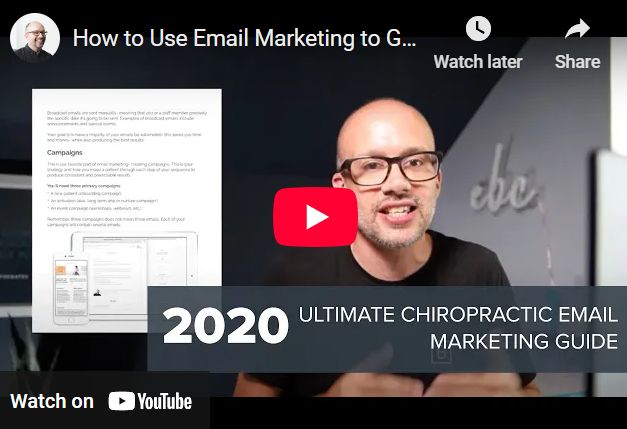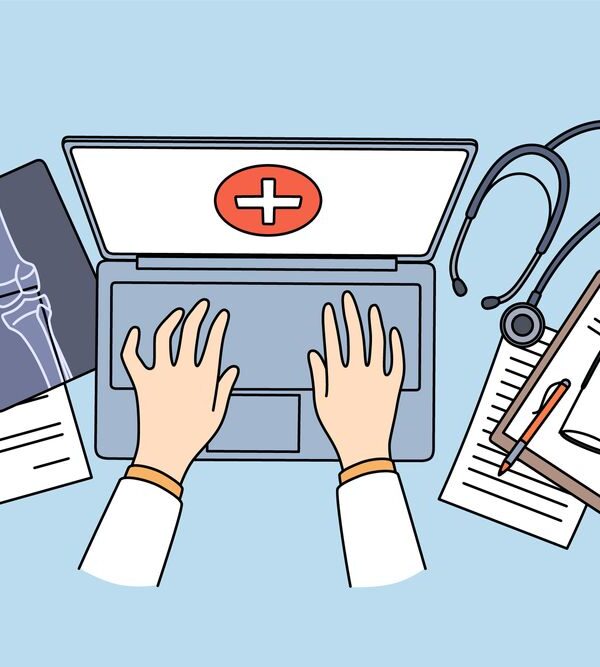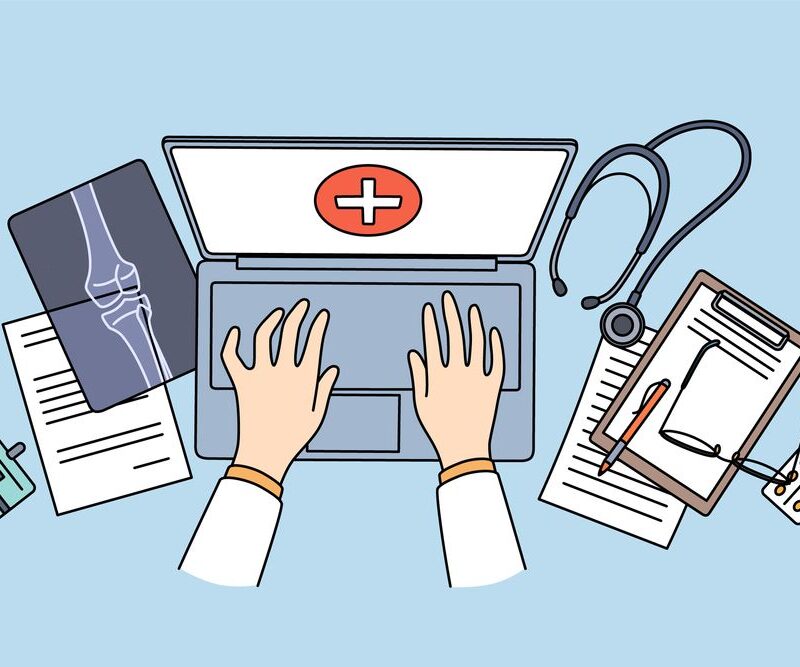How to Create a Patient Email List and Use It to Grow Your Practice

In the current digital era, an email list is an essential asset for any medical practice seeking to improve communication and cultivate stronger relationships with patients. This article examines the importance of developing an email list, presents practical strategies for its creation and maintenance, and offers insights on how to utilize this valuable resource to expand your practice. A well-managed email list can significantly enhance patient engagement and promote services, thereby transforming the outreach and effectiveness of the practice.
Key Takeaways:
- Utilize various methods to collect email addresses from patients, such as at appointments, online forms, and social media sign-ups.
- Keep your patient email list organized and updated using email management software, regular cleaning, and segmentation for targeted messaging.
- Use your patient email list to promote your services, request reviews and referrals, and engage with patients for growth and retention.
Why is a Patient Email List Important for Your Practice?
A well-maintained patient email list is essential for healthcare practices as it facilitates effective healthcare email marketing strategies, thereby enhancing patient engagement and fostering trust between patients and healthcare organizations.
By employing automated emails, practices can streamline communication, convey important information such as appointment reminders, and cultivate growth through personalized experiences.
This strategic approach not only conserves time but also improves the overall patient experience, ensuring that patients remain informed and actively engaged with their healthcare providers.
How to Create a Patient Email List?
Establishing a patient email list is a critical initiative for healthcare organizations aiming to enhance their email marketing strategies and improve patient engagement.
By employing various approaches, such as:
- requesting email addresses during appointment scheduling,
- utilizing online forms and surveys,
- and encouraging sign-ups through social media platforms,
healthcare practices can effectively create a comprehensive contact list while maintaining compliance with HIPAA regulations.
1. Ask for Email Addresses at the Time of Appointment
Requesting email addresses at the time of appointments is an effective and straightforward method for developing a robust patient email list. This approach not only facilitates seamless communication but also promotes patient engagement by delivering valuable information, including appointment reminders and healthcare updates.
For successful implementation of this strategy, it is essential to inform patients about the advantages of sharing their email addresses. It is important that they understand how this will enable them to receive timely health information, personalized care tips, and exclusive promotions.
Best practices involve training staff to respectfully request email addresses during check-in or appointment confirmation while employing patient-friendly language. Ensuring compliance with HIPAA regulations is of utmost importance.
It is imperative to clearly communicate privacy policies and guarantee that email addresses are stored securely, thereby fostering trust between patients and healthcare providers.
2. Utilize Online Forms and Surveys
Utilizing online forms and surveys represents an effective method for gathering email addresses for patient email lists while simultaneously engaging with patients. By implementing these digital tools, healthcare organizations can streamline the information collection process and provide a user-friendly experience.
These platforms not only facilitate efficient data entry but also offer customization options, allowing healthcare providers to tailor questions to address specific patient needs. For example, a straightforward post-appointment survey can yield invaluable feedback that aids in service improvement while ensuring patients feel that their opinions are valued.
Incorporating these surveys into email marketing strategies enables providers to better segment their audience, delivering targeted messages based on the insights gained. This dual benefit not only enhances patient engagement but also fosters a sense of community, ultimately leading to increased satisfaction and loyalty over time.
3. Offer Incentives for Email Sign-Ups
Offering incentives for email sign-ups constitutes a highly effective strategy to encourage patients to join your patient email list, thereby increasing their willingness to engage with your healthcare organization.
These incentives may take various forms, including discounts on services, exclusive access to valuable resources, or complimentary health tips and wellness guides.
Providing early notifications about upcoming workshops can significantly enhance the attractiveness of the sign-up process. This approach not only expands the patient base but also cultivates a sense of community and trust between patients and the organization.
It is imperative that any incentives offered adhere to high ethical standards and comply with HIPAA regulations to safeguard patient privacy. This ensures that while patients are encouraged to participate, their personal health information remains secure, thereby fostering a positive relationship founded on transparency and trust.
4. Utilize Social Media and Website Sign-Ups
Utilizing social media and website sign-up forms is an effective strategy for expanding a healthcare organization’s patient email list, thereby enabling outreach to a broader audience. By integrating sign-up forms directly on the organization’s website and promoting them across various social media platforms, it is possible to attract more patients to engage with email marketing initiatives.
To optimize this approach, it is important to ensure that the sign-up forms are user-friendly and require minimal information, thereby preventing potential sign-ups from feeling overwhelmed.
Strategically positioning these forms in high-traffic areas on the website, such as landing pages and blog posts, can further enhance their visibility.
On social media, employing visually appealing posts that highlight the benefits of subscribing, accompanied by direct links to the sign-up forms, can effectively drive engagement.
Furthermore, maintaining HIPAA compliance is essential; clearly outlining privacy policies and securing any shared information will build trust with the audience and ensure that their data is handled responsibly.
How to Keep Your Patient Email List Organized and Updated?
Maintaining an organized and up-to-date patient email list is essential for optimizing engagement and effectiveness in healthcare email marketing initiatives.
The use of email management software can facilitate this process, allowing practices to routinely cleanse and refresh their lists, as well as to segment patients for more targeted messaging.
1. Utilize Email Management Software
Utilizing email management software is a crucial step in effectively managing patient email lists, enabling healthcare organizations to streamline their email marketing efforts. This software facilitates the organization of contacts, automates processes, and enhances patient engagement through targeted campaigns.
By implementing various features such as segmentation, tracking, and reporting, email management tools enable healthcare providers to customize their communications according to individual patient needs and preferences. This capability not only enhances the relevance of the messages sent but also increases the likelihood of patient interaction and response.
Many email management solutions come equipped with built-in compliance features, ensuring adherence to healthcare regulations while managing sensitive information. These tools promote a more personalized approach to email marketing, ultimately fostering stronger patient relationships and improving health outcomes.
2. Regularly Clean and Update Your List
Regularly cleaning and updating the patient email list is essential for maintaining high email open rates and minimizing email bounce rates. By consistently removing inactive contacts and ensuring that patient information is accurate, healthcare organizations can enhance the effectiveness of their email marketing campaigns.
This process involves not only the deletion of outdated entries but also the validation of current data to ensure compliance with privacy regulations. Engaging with patients on a regular basis can help identify which contacts remain interested, while employing strategic methods such as A/B testing for subject lines can provide valuable insights into what resonates with the audience.
Segmenting the email list based on patient interactions can significantly improve targeted communication, ultimately fostering better patient relationships and increasing conversion rates. Regular assessments of these strategies will be instrumental in keeping the email list relevant and effective in achieving overall communication objectives.
3. Segment Your List for Targeted Messaging
Segmenting the patient email list for targeted messaging is an essential strategy in healthcare email marketing, allowing practices to customize their communications according to patient needs and preferences. This method not only enhances engagement but also strengthens the relationship between healthcare providers and their patients.
By categorizing patients based on demographics such as age, gender, or location, healthcare providers can utilize email segmentation to develop personalized messages that resonate more effectively with specific groups. Additionally, considering patients’ interests such as wellness tips or particular health conditions enables the creation of relevant content that maintains patient engagement.
Analyzing patient engagement levels facilitates an understanding of which patients are more likely to respond to specific messages, thereby optimizing outreach efforts. Email segmentation enables practices to significantly enhance their marketing strategies, resulting in improved patient satisfaction and better health outcomes.
How to Use Your Patient Email List to Grow Your Practice with Effective Email Marketing Strategies?
Utilizing your patient email list effectively can greatly enhance the growth of your practice by engaging patients with valuable content, promoting your services, and implementing tactics to grow your practice.
By implementing regular newsletters and providing educational content, healthcare organizations can keep patients informed, share educational content, and encourage them to take advantage of special offers and consultations.
1. Send Regular Newsletters and Educational Content
Sending regular newsletters and educational content to your patient email list is an effective strategy for maintaining engagement and providing valuable healthcare resources to patients. By disseminating relevant health information, healthcare practices can build trust and enhance the patient experience while encouraging individuals to connect with their services.
These newsletters can encompass a variety of educational topics and healthcare newsletter ideas, including:
- Nutrition tips
- Exercise recommendations
- Mental health strategies
- Updates on recent medical advancements
By facilitating ongoing communication, healthcare providers not only keep patients informed but also cultivate a sense of community, support, and personalized experiences. Regularly sharing insights into preventive care and available treatments enables patients to take an active role in managing their health.
Ultimately, this proactive approach fosters a more informed patient population, ensuring that individuals feel more comfortable discussing health concerns, engaging with your practice, and seeking appropriate care when necessary.
2. Promote Your Services and Special Offers
Promoting services and special offers through a patient email list is a highly effective strategy for attracting and retaining patients, enhancing patient engagement, and optimizing email marketing strategies. By communicating these promotions effectively via email, healthcare organizations can enhance awareness and encourage patients to schedule appointments, take advantage of consultations, and even book online appointment booking.
Strategically positioning offers within the body of emails can significantly improve visibility, response rates, and overall patient trust. The integration of compelling calls to action encourages recipients to engage promptly, whether that involves booking an appointment, exploring additional resources, or scheduling a free consultation call.
Clear messaging is essential, as it conveys the benefits of the promoted services and eliminates any confusion that may hinder potential patients from taking that critical next step, such as utilizing online appointment booking or contacting your practice. Effectively combining these elements creates a more interactive experience, fosters a sense of trust, and encourages ongoing communication with the patient base.
3. Request Reviews and Referrals
Requesting reviews and referrals from your patient email list is a highly effective strategy for building patient trust, enhancing the reputation of your practice, and leveraging your contact list. Encouraging satisfied patients to share their experiences can significantly influence the growth of your practice and attract new patients.
To effectively solicit this valuable feedback, it is crucial to consider the timing of your emails and employ automated emails. Sending a request shortly after an appointment can yield more favorable outcomes, as patients are more likely to have a vivid recollection of their visit. The messaging should be professional yet approachable, expressing genuine appreciation for their time, insights, and the importance of their feedback in improving your services. Emphasizing how their positive feedback can assist others in selecting your practice may further motivate them to respond.
Incorporating testimonials into future marketing campaigns not only honors the voices of your patients but also reinforces your practice’s credibility, enhances visibility within the community, and optimizes effective email campaigns.
4. Engage with Your Patients and Encourage Feedback
Engaging with patients and soliciting feedback through a patient email list significantly enhances the relationship between healthcare organizations and their patients, creating a valuable communication channel. By establishing open channels for communication, practices can obtain valuable insights that drive service improvements and elevate patient satisfaction.
Employing various interactive strategies, such as surveys, direct inquiries, and email autoresponders, fosters deeper connections as healthcare providers gain insights directly from patients’ experiences and perceptions. Personalized communication, tailored to an individuals history and preferences, instills a sense of value and understanding in patients, thereby encouraging them to provide candid feedback.
Regularly seeking input not only demonstrates respect for patients’ opinions but also assists practitioners in identifying areas needing adjustments, innovations, and leveraging email bounce rates and email open rates. This proactive approach to leveraging patient feedback ultimately supports a more patient-centered care model, optimizing healthcare delivery and outcomes.
Best Practices for Managing and Utilizing Your Patient Email List
Implementing best practices for managing and utilizing a patient email list is essential for ensuring effective healthcare email marketing while maintaining HIPAA compliance and patient trust.
By adhering to these practices, healthcare organizations can enhance patient engagement, build trust, improve overall communication efficiency, and grow your practice.
1. Always Get Consent Before Adding Someone to Your List
Obtaining consent prior to adding individuals to a patient email list is an essential practice that ensures compliance with HIPAA regulations while fostering trust in the healthcare organization. This approach not only safeguards patient privacy but also enhances the credibility of email marketing efforts.
Acquiring consent is vital as it enables healthcare providers to engage with patients in a respectful and transparent manner, thereby establishing a more meaningful connection and ensuring privacy assurance.
Methods for gathering consent may vary and can include:
- Explicit opt-in forms on websites
- Patient intake forms
- Direct consultations
Employing these methods aligns with ethical email marketing practices, highlighting the significance of communicating with patients who genuinely wish to receive relevant information and ensuring HIPAA compliance.
By prioritizing consent, healthcare organizations not only comply with legal obligations but also cultivate a reputation for integrity, ultimately leading to strengthened relationships with their patients.
2. Personalize Your Emails and Make Them Relevant to Your Patients
Personalizing emails and ensuring their relevance to patients constitutes a fundamental strategy for enhancing engagement, effectiveness, and overall patient trust within healthcare email marketing campaigns. By tailoring content to align with patient preferences and needs, healthcare organizations can cultivate significant connections with their patients and provide personalized experiences.
This objective can be accomplished by leveraging patient data to gain insights into their unique health histories, preferences, interactions with the services provided, and ensuring email list building. Segmenting the email list facilitates targeted messaging that directly addresses specific demographics, such as age, health conditions, treatment statuses, and helps in personalizing email copy.
Additionally, including pertinent healthcare resources such as articles, tips, appointment reminders, and updates on recent medical advancements enhances the overall experience, making patients feel valued and understood. This focused approach not only increases open and response rates but also fosters trust and loyalty, ultimately contributing to improved health outcomes.
3. Don’t Overwhelm Your Patients with Too Many Emails
Avoiding the inundation of patients with excessive emails is crucial for maintaining engagement, ensuring that communications are perceived positively, and managing email bounce rates. Achieving an appropriate balance in email frequency is essential to retain patient interest and foster a trusting communication channel.
To accomplish this, it is advisable to send emails on a weekly or bi-weekly basis, depending on the nature of the information being disseminated, such as birthday wishes, educational content, or appointment reminders.
Employing a variety of content types such as educational resources, health tips, appointment reminders, birthday wishes, and special announcements can sustain patient interest without overwhelming their inboxes.
Utilizing email analytics and email software can yield valuable insights into open rates and click-through rates, allowing for adjustments in frequency and content based on actual engagement metrics. Regularly monitoring responses will facilitate the refinement of communication strategies, creating a more personalized experience that resonates with patients and ultimately promotes stronger relationships and improved health outcomes.
4. Continuously Monitor and Analyze Your Email Campaigns for Improvement
Continuous monitoring and analysis of email campaigns are essential for enhancing engagement and optimizing the effectiveness of patient email lists. By tracking metrics such as email open rates, click-through rates, and testing subject lines, healthcare organizations can refine their strategies, improve communication, and optimize for mobile.
Furthermore, assessing bounce rates, email open rates and unsubscribe metrics provides valuable insights into recipient preferences, aiding in the fine-tuning of messaging, targeting, and email marketing strategies. A comprehensive understanding of these key performance indicators enables the creation of more relevant content that resonates with patients, thereby fostering stronger relationships, patient engagement, and increasing retention rates.
Utilizing market segmentation and email segmentation can further contribute to the development of effective email campaigns tailored to specific audience needs, such as personalized experiences and topic-specific lead magnets. Implementing changes based on these insights ensures that the organization remains competitive and responsive to the evolving healthcare landscape, ultimately promoting ongoing patient engagement, patient trust, and trust.

Frequently Asked Questions
How can I create a contact list for my practice?
To create a contact list, you can start by collecting email addresses from your current patients during appointments or through your practice’s website. You can also use email list building techniques by offering a sign-up form on your website or social media pages for interested patients to join your email list. Make sure to comply with HIPAA regulations and ensure privacy assurance.
What information should I include in my contact list?
Aside from their email addresses, you can include their first and last names, birthdates, and any relevant medical information. This will help you personalize your emails, personalize email copy, and tailor them to specific patient needs. Additionally, segment your patients based on their medical history and preferences.
How can I use my contact list to grow my practice?
Your contact list can be a powerful tool for growing your practice. You can use it to send out newsletters and updates about your practice, promote special offers or events, share educational content related to your services, and deliver important information. Consider using tactics to grow such as offering free consultation calls, hosting webinars, and implementing online appointment booking features to engage patients further. This can help attract new patients and retain current ones.
Is it important to get consent from patients before adding them to my contact list?
Absolutely. It is important to get consent from patients before adding them to your contact list. This not only ensures that you are following privacy laws and HIPAA regulations, but it also helps build trust with your patients. Make sure to have a clear opt-in process and give patients the option to unsubscribe at any time. This privacy assurance fosters patient trust and long-term engagement.
How often should I send emails to my contact list?
The frequency of your emails will depend on your practice and the type of content you are sending. It’s important not to bombard your patients with too many emails, as this can be overwhelming and lead to unsubscribes. Aim for 1-2 emails per month and adjust based on patient engagement and feedback. Test subject lines and optimize for mobile to increase the effectiveness of your emails.
Are there any tools or software that can help manage my contact list?
Yes, there are many email marketing software and tools available that can help you manage your contact list. Some popular options include Mailchimp, Constant Contact, and Campaign Monitor. These tools allow you to easily create and send emails, track engagement, manage your subscriber list, and use email autoresponders for automated emails. Additionally, consider using Calendly for online appointment booking and Automizy for advanced email marketing automation. These tools can save time and improve engagement.











